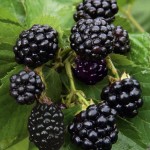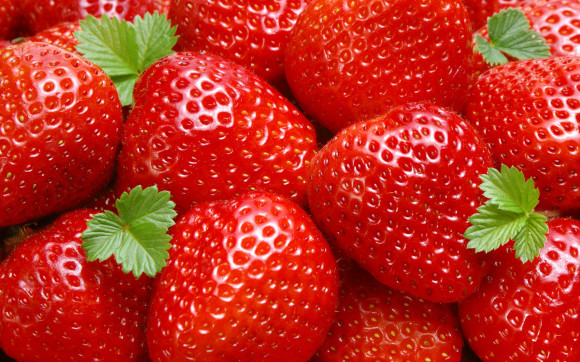When most people think about wine, they think about the grapes. In fact, when people find out that I make homemade wine, one of the first things I am asked is where I get my grapes or what kind of grapes do I use? It is no wonder, since most homemade wine recipes are grape wines. But, did you know that you can learn how to make homemade wine out of virtually any fruit? Yes, it is true and you may be delighted with the results. These non-grape wines are called Country Wines.
Ever since I put out my video on making organic black raspberry wine, people have been asking me questions like, “Can I make wine from other berries, too?” or “I have a fig tree. Can I make wine from figs?” Yes you can! In fact, you can produce designer country wines that are outstanding and not available anywhere!
Many people refer to non-grape based wines as country wines. You will be astonished how wonderful these homemade Country Wines are. The beauty of making country wines is that many fruits are grown a lot easier than grapes in much less space. All you need is quality fruit and you can learn to make a homemade wine that will blow your socks off.
While I would recommend checking back to this website for country wines recipes, I would also want to recommend this book as a great starting place. It has so many recipes for making wine that I believe it should be on every wine maker’s book shelf. It is a pleasure to read, even if it has funky things like Carrot Wine in it. Again, it is a starting place, so customize the recipes to your liking. The author’s website is here.
You can purchase this book with loads of recipes for country wines here.
Another place to check out for wine making recipes other than my website is Jack Keller’s website.
Back to how I make country wines… A starting place for making homemade wine with fruit is to plan on 3 to 6 lbs of fruit per gallon of wine you wish to make. The more fruit the better. Grape wines require close to double the amount of fruit as a berry wine.
How to get excellent quality fruit for your country wines
I remember going to a friend’s house and seeing his blackberry plants. He had so many blackberries that he didn’t know what to do with them all. He made over 40 jars of jam, and had fresh blackberries with cream or yogurt for breakfast almost every day. Yet, there were so many still on the plants. When I asked him about it, he said that his family couldn’t possibly eat them all. That was from one Triple Crown Blackberry plant! Right then I knew that I wanted to get one, too!
If you are thinking about planting some fruit bearing plants, consider things like raspberries, blackberries and blueberries. Not only will you have delicious fruit for breakfast and desserts, but you will have wonderful berries for wine making. The black raspberry country wine I make is amazing! Raspberries are much more expensive than grapes.
If you want to make this kind of wine and want to make it affordable, then grow raspberries.
Another alternative is to seek out a pick your own farm. Many of these farms will give you a great price on berries and if you bring a bottle of wine for the farmer, you may even get a great deal! It pays to build a good relationship with the farmers who grow your produce, too!
At the time that I am writing this, strawberries are coming into season! How great would it be to make strawberry wine! Does your neighbor have an apple or pear tree? Give them some berries in exchange for some apples! There are lots of ways that you can come across some excellent quality fruit grown locally! Explore the alternatives available to you, and you will be making your own country wine in no time!
Sicilian Prince’s Country Wine Making Guidelines
- Start with the best quality fruit and clean it well.
- Be sure to use Pectic Enzyme to break down the pectin in the fruit.
- You will most likely need to add Acid Blend or the juice of some lemons to the fruit to raise the acidity.
- You will most likely need to add sugar and water to the fruit to achieve a good alcohol level. Make the sugar into a liquid syrup by using boiling water and dissolving it in the water. Let it cool and add it to the fruit. Add water to achieve a target Specific Gravity reading. Don’t go over 1.1 SG.
- You will want to add Tannin for some fruits. Don’t add tannin to fruits that naturally have a lot of tannin. An example of a fruit with a lot of tannin is Elderberry.
- Most of the time, I add Yeast Nutrient to the must to aid in fermentation. Sometimes, I add a little again when racking to secondary fermentation.
- Use packaged yeast specifically for wine making.
When making homemade wine with fruit, here are my generic guidelines:
Most of the time, I put my fruit into a mesh bag and crush it.
After mixing the crushed fruit in the bag, water, sugar (or honey), acid blend and getting a target specific gravity that you want, stir in one crushed Camden tablet per gallon and let it sit covered for 12 hours.
When 12 hours have past, add your pectic enzyme and let it sit for at least another 12 hours. When at least 24 hours has past from the time you put in the Camden tablets, you can pitch your yeast into the fruit juice, which many wine makers call must.
You should stir the wine at least daily with a sanitized spoon and make sure the push the fruit bag under a few times. After about a week, you should see that your specific gravity reading should indicate that it is time to transfer the wine into a secondary fermenting carboy with an airlock.
Let your homemade wine sit a few weeks up to a month and transfer it again into a clean and sanitized carboy.
Continue doing this a few times at two or three month intervals, each time racking off the sediment.
Then, degas, add one crushed Camden tablet per gallon and use Sparkoloid or other fining agent to clear your homemade wine. Wait 10 days and rack your homemade wine again off the sediment. You may also wish to filter you homemade country wine to add that extra polish to make it even more beautiful.
Finish Up Your Homemade Fruit Country Wine
At this phase in making your country wine, it should be completely dry. Taste some of your delicious fruit wine and determine if you like it, or want it sweeter. If you want it sweeter, then follow the procedure I outlined in my how to backsweeten wine article. When you get it exactly how you want it, bottle your wine and age it for at least a few months.
I hope you have enjoyed reading my article on Country Wines! I plan on making a few of them this summer. I will be sure to post my videos and recipes as I make them, so check back and see how they come out!






DO you have recipe for Black Cherry wine that you could share. I have made the strawberry and Black raspberry mine and both turned out to be amazing.
Making blueberry wine. Primary fermentation complete. Can I add more blueberries at this point to receive a fuller body
Sure